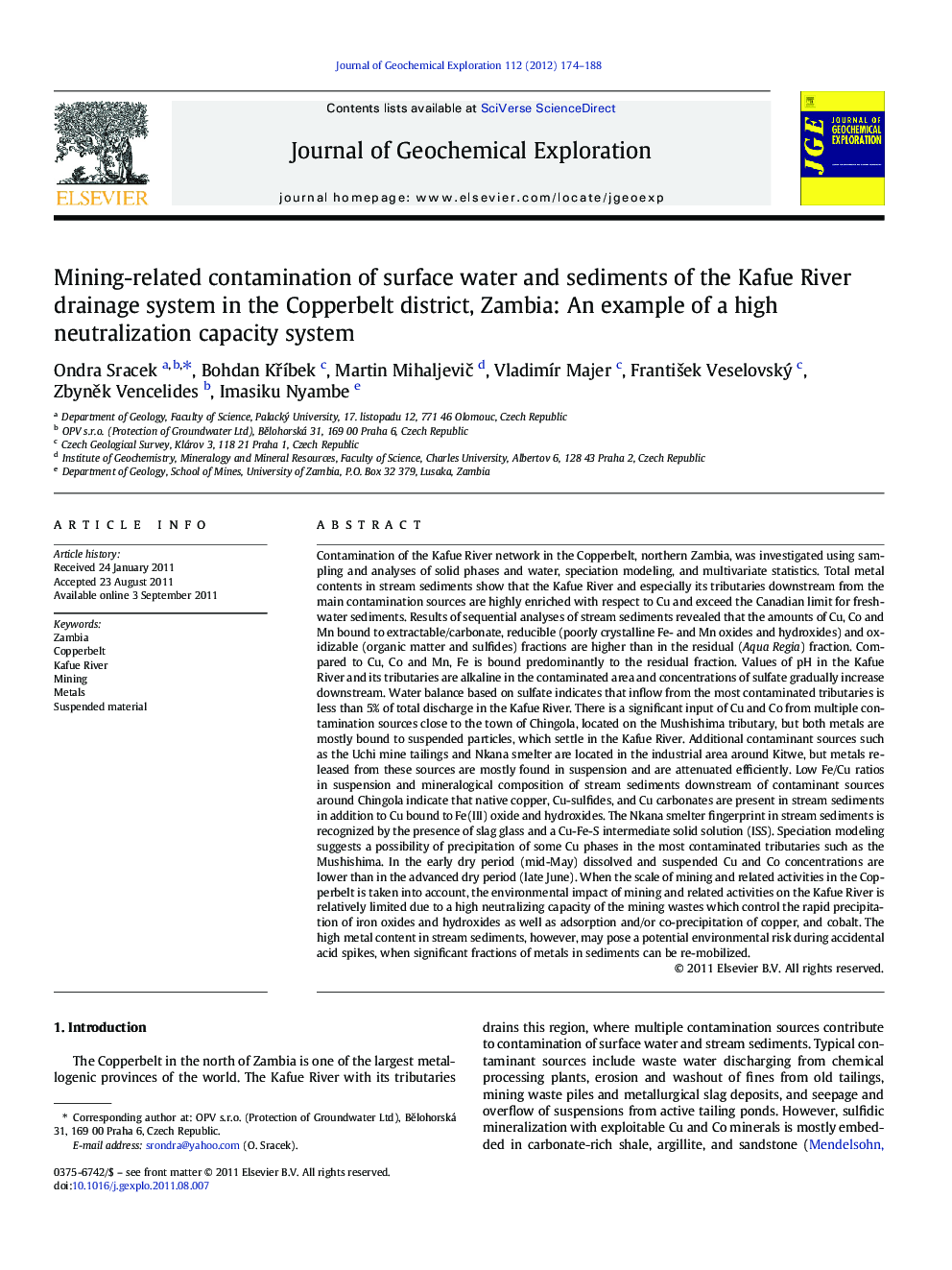| Article ID | Journal | Published Year | Pages | File Type |
|---|---|---|---|---|
| 4457761 | Journal of Geochemical Exploration | 2012 | 15 Pages |
Contamination of the Kafue River network in the Copperbelt, northern Zambia, was investigated using sampling and analyses of solid phases and water, speciation modeling, and multivariate statistics. Total metal contents in stream sediments show that the Kafue River and especially its tributaries downstream from the main contamination sources are highly enriched with respect to Cu and exceed the Canadian limit for freshwater sediments. Results of sequential analyses of stream sediments revealed that the amounts of Cu, Co and Mn bound to extractable/carbonate, reducible (poorly crystalline Fe- and Mn oxides and hydroxides) and oxidizable (organic matter and sulfides) fractions are higher than in the residual (Aqua Regia) fraction. Compared to Cu, Co and Mn, Fe is bound predominantly to the residual fraction. Values of pH in the Kafue River and its tributaries are alkaline in the contaminated area and concentrations of sulfate gradually increase downstream. Water balance based on sulfate indicates that inflow from the most contaminated tributaries is less than 5% of total discharge in the Kafue River. There is a significant input of Cu and Co from multiple contamination sources close to the town of Chingola, located on the Mushishima tributary, but both metals are mostly bound to suspended particles, which settle in the Kafue River. Additional contaminant sources such as the Uchi mine tailings and Nkana smelter are located in the industrial area around Kitwe, but metals released from these sources are mostly found in suspension and are attenuated efficiently. Low Fe/Cu ratios in suspension and mineralogical composition of stream sediments downstream of contaminant sources around Chingola indicate that native copper, Cu-sulfides, and Cu carbonates are present in stream sediments in addition to Cu bound to Fe(III) oxide and hydroxides. The Nkana smelter fingerprint in stream sediments is recognized by the presence of slag glass and a Cu-Fe-S intermediate solid solution (ISS). Speciation modeling suggests a possibility of precipitation of some Cu phases in the most contaminated tributaries such as the Mushishima. In the early dry period (mid-May) dissolved and suspended Cu and Co concentrations are lower than in the advanced dry period (late June). When the scale of mining and related activities in the Copperbelt is taken into account, the environmental impact of mining and related activities on the Kafue River is relatively limited due to a high neutralizing capacity of the mining wastes which control the rapid precipitation of iron oxides and hydroxides as well as adsorption and/or co-precipitation of copper, and cobalt. The high metal content in stream sediments, however, may pose a potential environmental risk during accidental acid spikes, when significant fractions of metals in sediments can be re-mobilized.
► Surface water in the Kafue River in the Copperbelt has neutral pH values. ► Sulfate behaves conservatively and its concentration increases downstream. ► Input of water from contaminated tributaries is small compared to the discharge in the river. ► Metals such as Cu and Co are transported mostly in suspension. ► Sedimentation of suspension creates a pool of potentially mobilizable metals in sediments.
